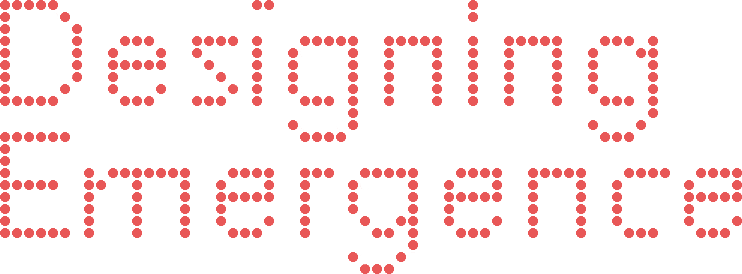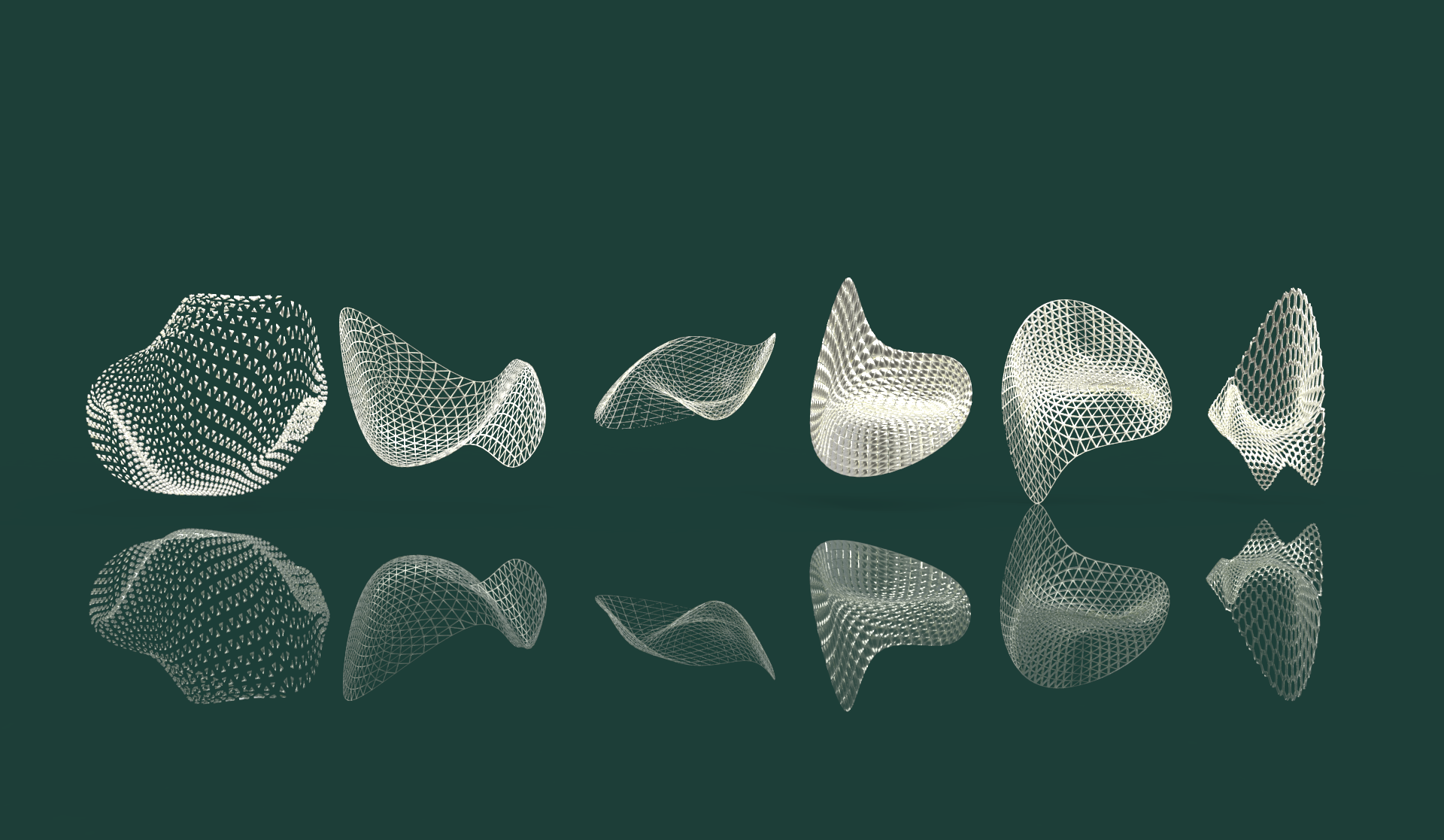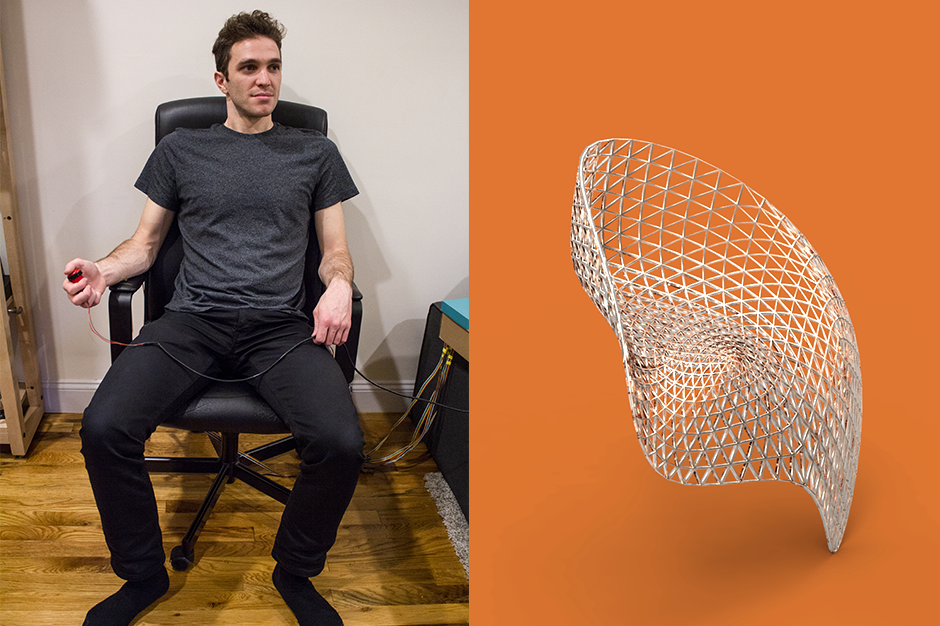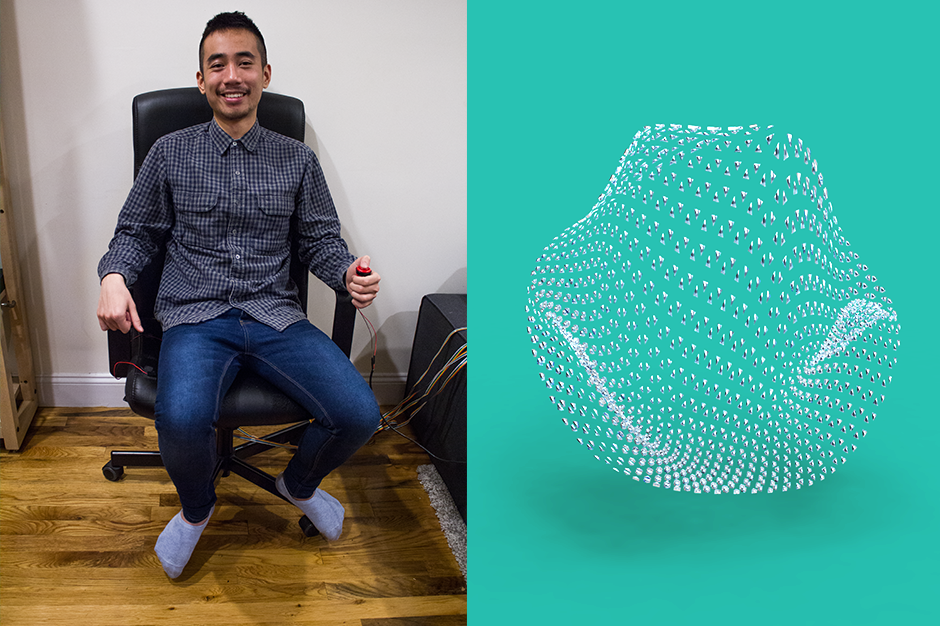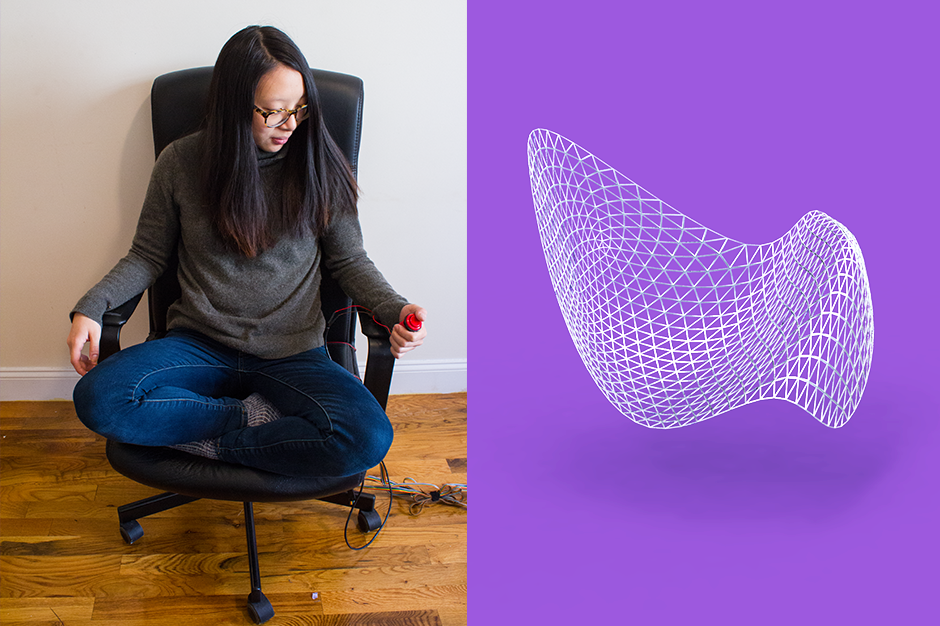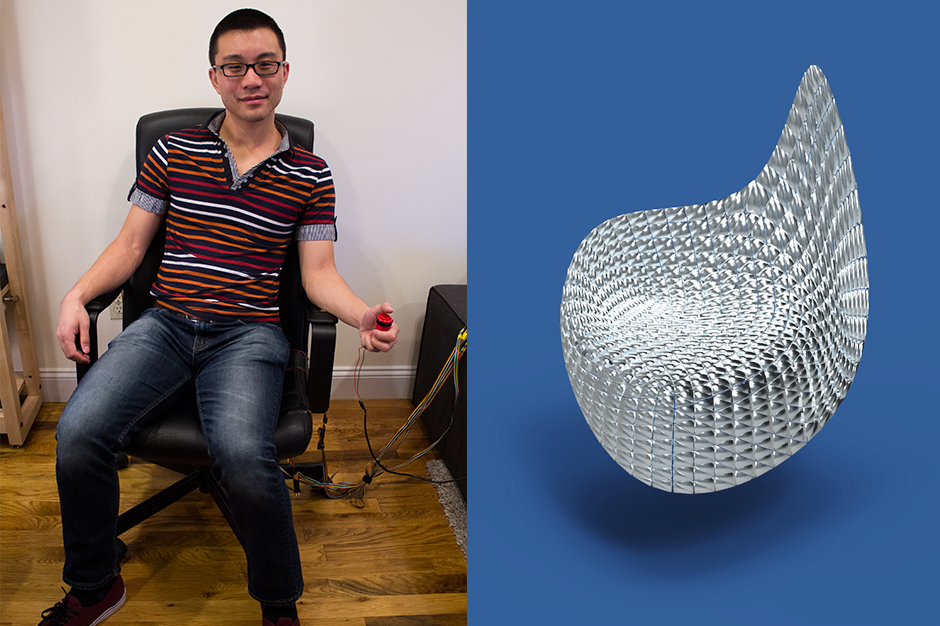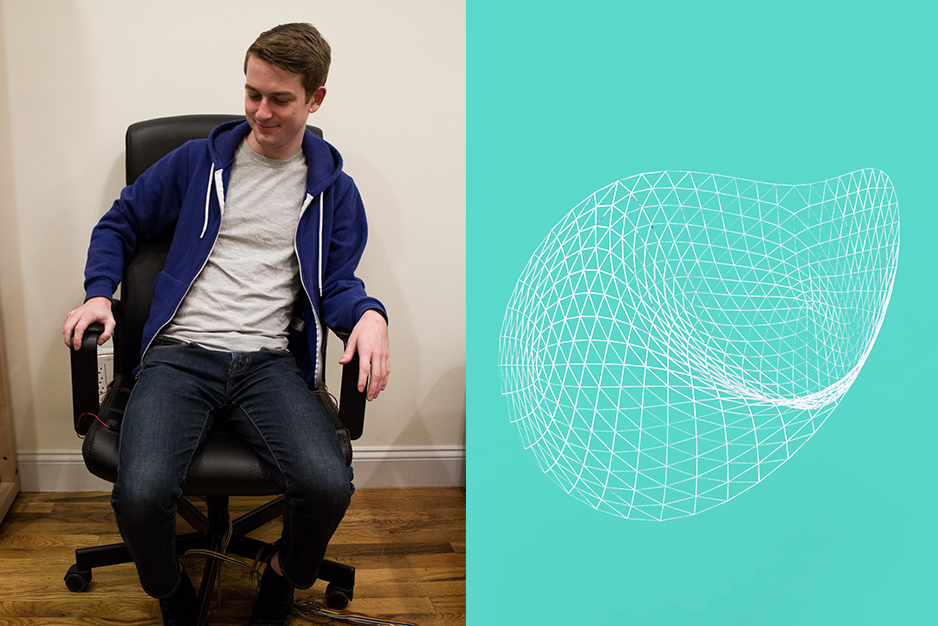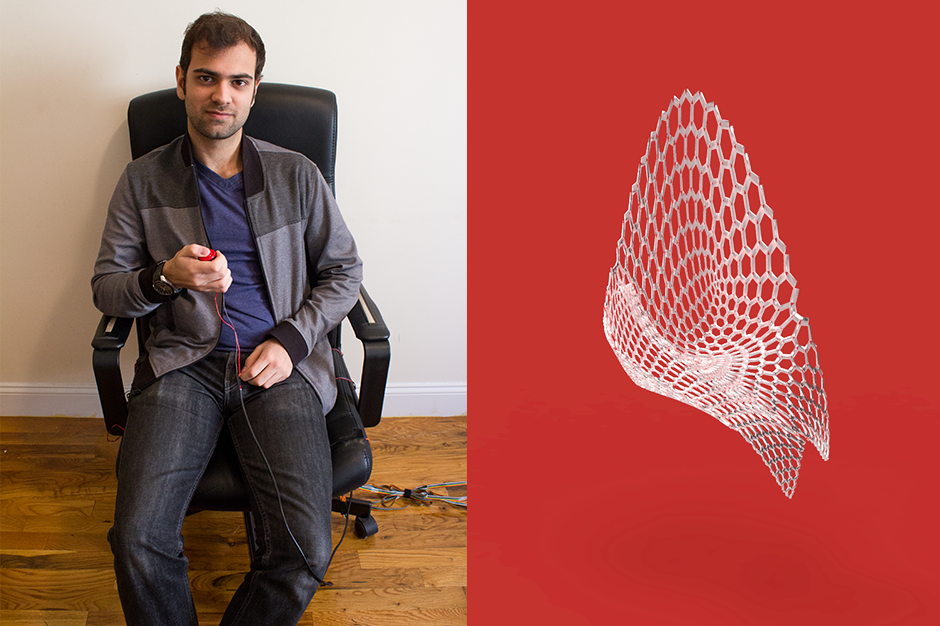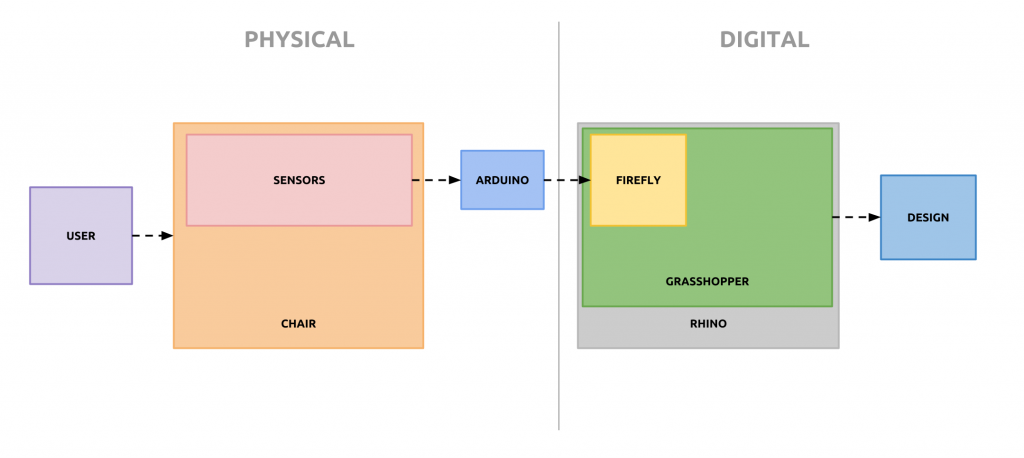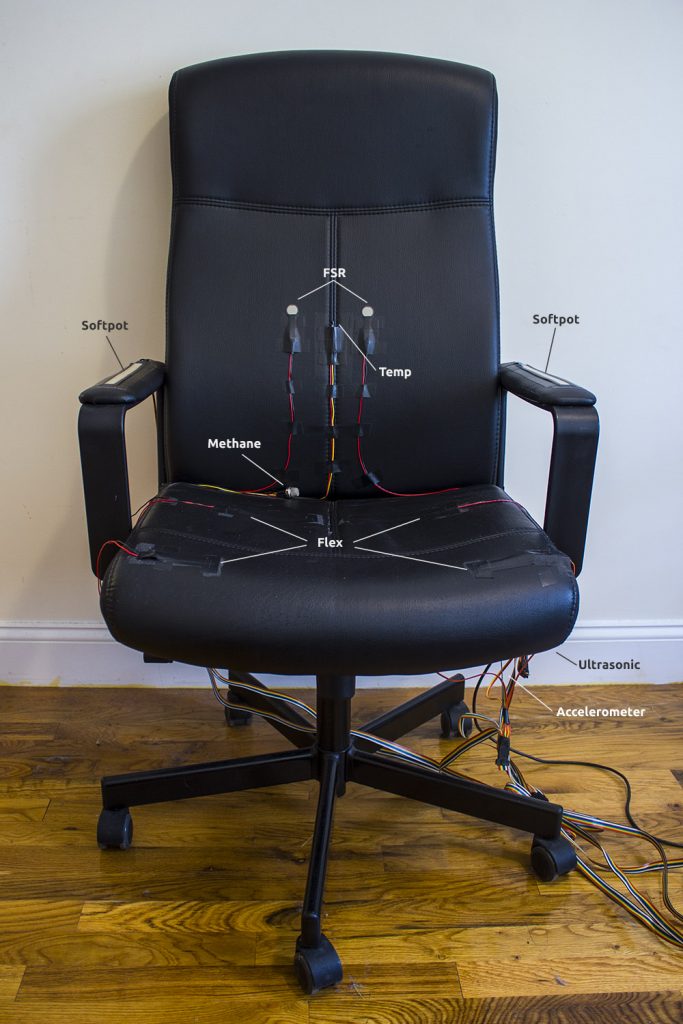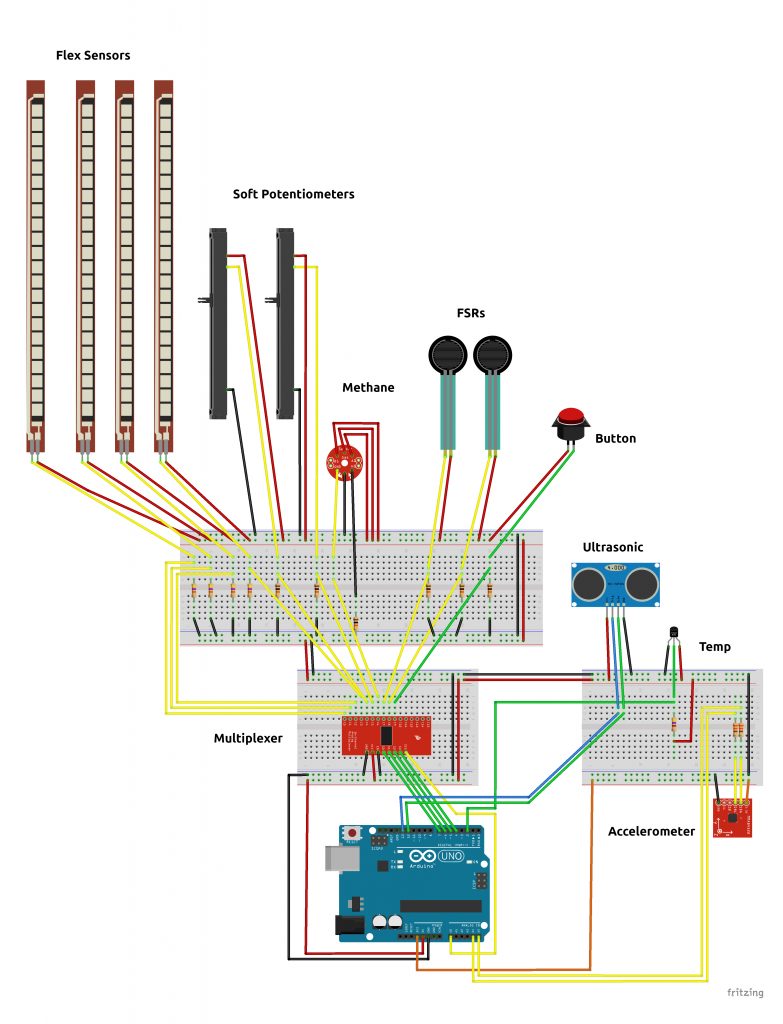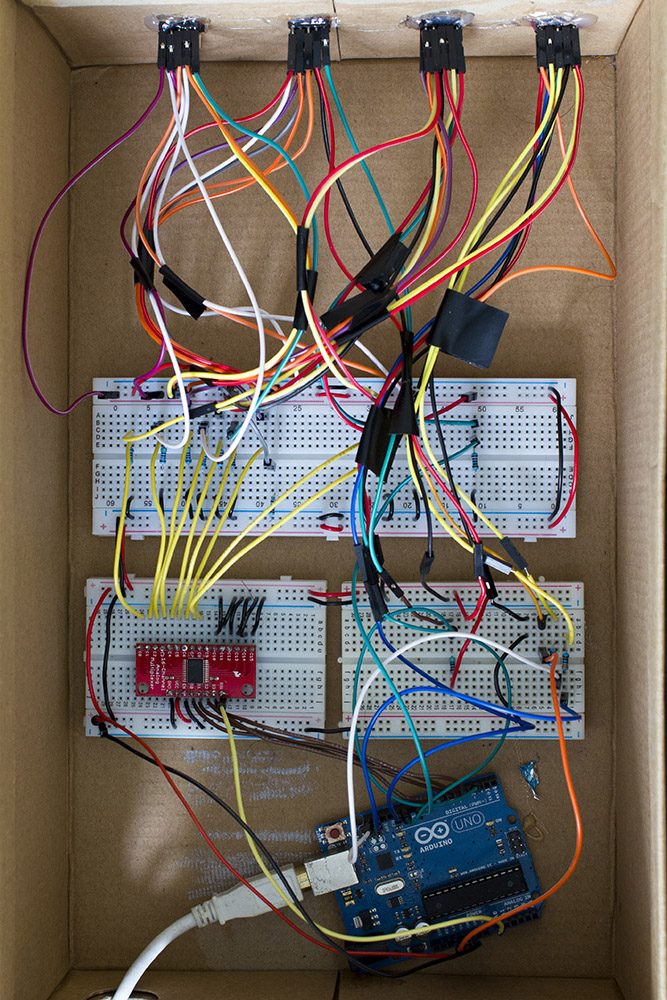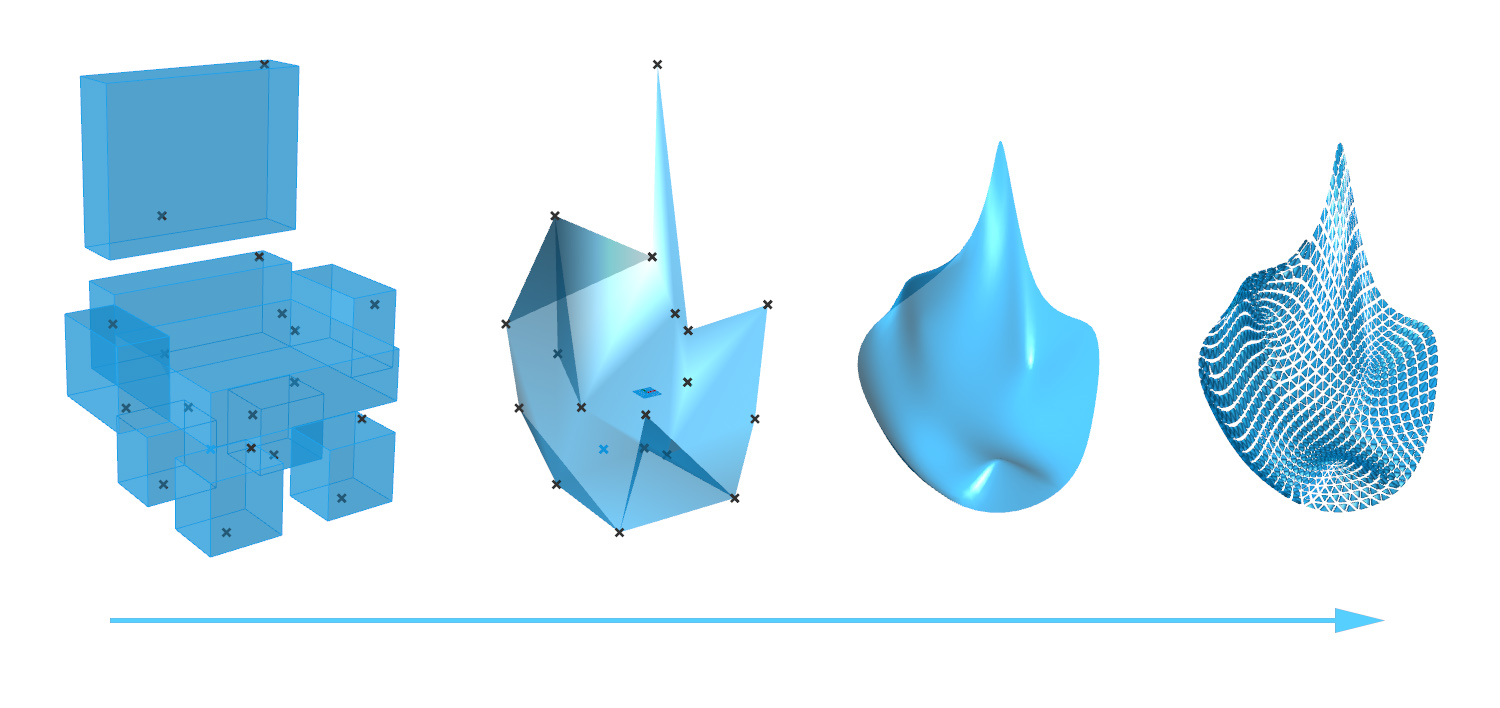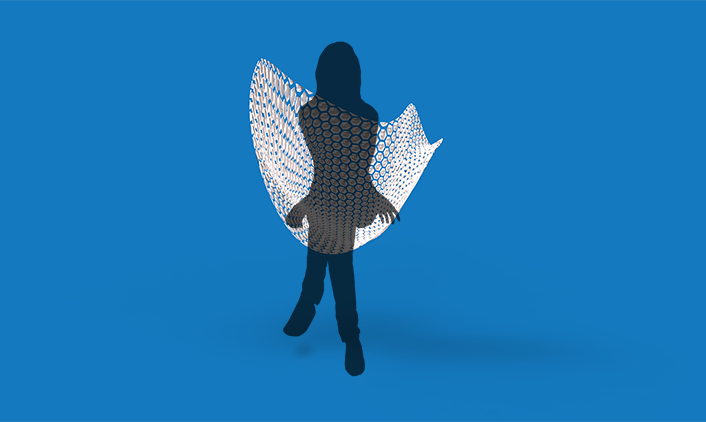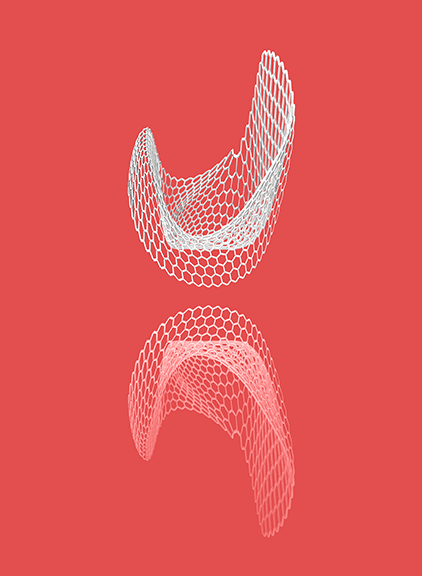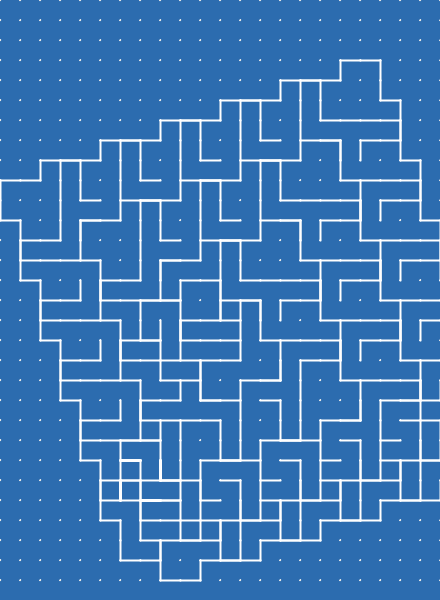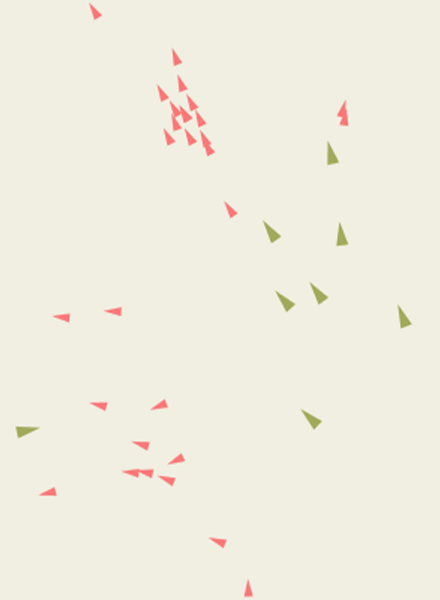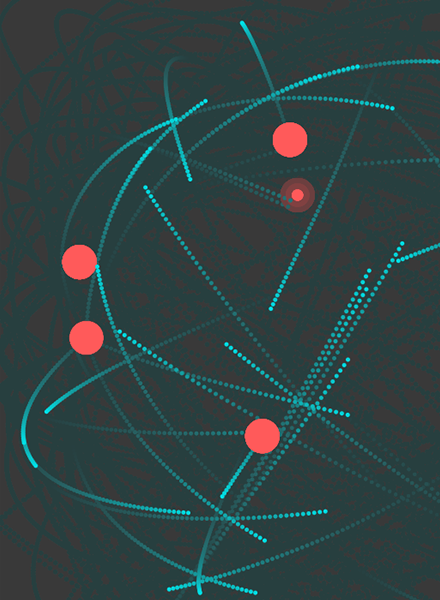Sit & Make
Sit & Make is a reworking of the process of designing chairs. Rather than coming up with ideas for forms, materials, and textures, a designer’s role in Sit & Make is to simply sit down. A unique chair-like form is generated based on the designer’s sitting position, which can be used to inspire designs that he/she may not have realized alone.
Creating
Making a chair is simple. A user just has to sit down, find a comfortable position and press a button to create their unique design.
Here are just some of the forms that have been created using Sit & Make.
How
Sit & Make has one foot in the physical world and another in the digital world. The physical world includes the user sitting on the chair, the sensors which capture the sitting position and an arduino. The arduino is used to transmit the data into Grasshopper, a plugin for Rhino, via Firefly. The data gets parsed by Grasshopper and results in a final design.
Each world has their own challenges. The physical part of the project is technical, involving soldering wires, a thorough wiring diagram and troubleshooting faulty sensors and cables. The digital side is a more conceptual problem, where I determine how the sensor data is transformed into a unique and meaningful form.
Physical
The chair is the interface between the designer and the final design and so has to be chosen with care. I wanted to maximize the number of sitting postures available which would in turn lead to a larger number of possible results. I found that an adjustable office chair was the perfect fit, as it had a large surface area to place sensors on and had a range of adjustment options.
I attached twelve sensors to the chair, optimizing for the different types of data available at each part of the chair while taking care to not create something that was uncomfortable or intimidating to sit on.
- 2 x Force Sensitive Resistors – Back Rest How much pressure is placed on the back
- 4 x Flex Sensors – Seat Measures the deformity of the seat cushion.
- 2 x Soft-Potentiometer – Arm Rest Where arms were placed on the arm rest
- 1 x Temperature Sensor: Amount of time someone has sat on the chair. The greater the sitting time, the higher the temperature
- 1 x Ultrasonic Sensor – Underneath the Seat Distance of seat off the ground.
- 1 x Accelerometer- Underneath the Seat Measures overall forces on the chair, especially when sitting down and getting up.
- 1 x Methane Sensor – Back of the Seat Amount of methane the designer produces while sitting on the chair.
The sensor data is fed through four long ribbon cables that lead to a box containing the rest of the circuit and arduino. The cables and box are modular and can be unplugged, allowing for ease of transport, repair of components and replacement of parts.
Digital
With the data now in the computer, its now a matter of transforming it into a design. I experimented with a few different techniques to create the chairs. It was hard to balance chairs that both reflected the user’s sitting position and had a unique character of their own. In the end, it was the simple technique of creating a Delauny Mesh that proved to be the perfect balance between beauty and emergence. Here is how the form generation happens.
First, the sensor values coming in from the arduino are normalized from 1 -100. These values then create a series of boxes which correlate to the sitting position. For example, if the back rest has a lot of pressure, the corresponding boxes are taller and wider. Random points are generated withing each box and form the basis of a delaunay mesh. The mesh is smoothed out and a texture is generated, again based on the sensor values, resulting in the final form.
Here is the relevant code for the project.
Conclusion
Creativity is the process of responding to the environment and pulling together multiple pieces of information to create something new. Humans have been at the center of this process since the dawn of mankind. With Sit & Make, I sought to introduce computation techniques alongside designers in the creative process. Balancing aesthetics and originality was a constant challenge but I hope the final forms can provide inspiration to designers while being beautiful enough to stand on their own.
The process of designing a chair by sitting on a chair was fun for users and merging the physical world and the digital world provided them with a tangible connection to the designs on screen. It contextualized the final form and made the designers more aware of the sitting positions of the chairs that were created.
Sit & Make used an emergent process to create the final forms and in future projects, I believe I can push this further. I wanted to add more layers of complexity that produce more variations in the “flavors” of forms produced. Adding AI to the process could also inject context into what is being designed and allow for more targeted form inspirations. Users could enter key words like “stool”, “high-back”, and “wire mesh” to influence the output.
Sit & Make feels like just the start of a method of designing and I am excited by the ideas humans and computers can come up with together.
